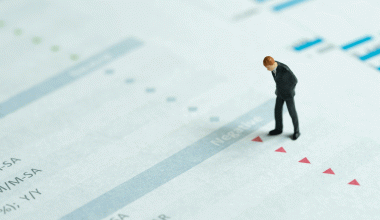Two examples of items that are easier to understand and invest in are stocks and bonds. However, investment banks create a financial instrument known as a collateralized loan obligation (CLO) in order to lower their risk profile and offer a diversified debt product to institutional investors. In this article, we will define the meaning of “CDO,” what it means for it to work, and its synthetic part.
What Is Cdo
A collateralized debt obligation (CDO), a type of structured asset, provides fixed-income securities with a range of yields and risks depending on various financial instruments. Due to the recent increase in CDO sales, which included funding for leveraged buyouts, it is now viable to issue securities with higher credit ratings than the instruments used to back CDOs. At the end of the loan term, the holder of the collateralized debt obligation (CDO) may request the return of the monies lent to the original borrower. Collateralized debt obligations (CDOs) are a type of derivative instrument since the price of a CDO (at least potentially) depends on the price of another asset.
The Structure of a Collateralized Debt Obligation
Historically, the underlying assets for collateralized debt obligations have included bank loans, corporate bonds, and government bonds. A CDO distributes income from numerous collateralized debt obligations to a group of CDO assets that are given priority.
Similar to equity, a senior CDO security is paid before a mezzanine CDO (preferred stock and common stock). The initial CDOs weren’t actively managed by a fund manager because they were cash-flow CDOs. However, by the middle of the 2000s, in the lead-up to the 2008 recession, marked-to-market CDOs made up the majority of CDOs. A fund manager actively handled the CDOs.
A Mortgage-Backed Collateralized Debt Obligation
A CDO backed by mortgages owns a range of different mortgage bonds in varying amounts. Parts from hundreds of different mortgage bonds are commonly included in a mortgage-backed CDO. The mortgage bonds were then created by combining thousands of various mortgages. The spread of a mortgage-backed CDO among multiple mortgage bonds is believed to reduce the danger of a small-scale housing collapse.
A mortgage-backed CDO was regarded as one of the safest investment options prior to the 2008 financial crisis. But these CDOs were particularly susceptible to a worldwide housing market systemic collapse. Property values decreased globally between 2007 and 2008.
Risks Associated with CMOs
CMOs are an investment, just like any other. That risk was more common than it is now during past market downturns. Investors in CMOs were exposed to extremely high risk as a result of the 2008 financial crisis, which also resulted in a housing bubble. In order to lessen some of the risks associated with CMO markets, other securities, and investments, the Securities and Exchange Commission made amendments in 2016. Despite the modifications, there are certain dangers associated with CMOs. And before you start investing, it’s critical to comprehend these risks. When investing in CMOs, you should be aware of the following common risks:
1. Prepayment
Earnings from CMOs are based on mortgage interest. The interest that a tranche was expected to produce may be lower if the rate of home loan prepayment is high. Investors might not benefit from CMO securities as much if anticipated interest rates decline.
2. Default
When homeowners don’t make their mortgage payments on time, defaults occur. There will be less profit and revenue in the tranche as a result of lower mortgage payments, which could result in investors earning less or even losing money.
3. Rate of Interest
Prices for CMOs are influenced by market rates. While higher interest rates can result in price increases, CMO costs often decline when rates go up. If you purchase or sell a CMO at a particular moment, this market give-and-take can be dangerous.
4. Market
The kinds of CMO securities that are offered and their values are influenced by the housing market.
5. Extension
Due to homeowners’ capacity to put off loan payments, which occurred during the COVID-19 outbreak, investors are exposed to risk for a longer length of time. If multiple mortgages in a tranche are extended by six months, investors may lose money or not reach the asset’s full maturity.
How Does a Cdo Work?
Collateralized debt obligations (CDO) work by repackaging and selling previously purchased loans as brand-new financial products that are backed by debt payments. The CDO will work by needing a “warehousing loan” from a significant investment to fund its initial operations. It then buys debt obligations from lenders using borrowed funds. If Bank of America provided you with a $5,000 five-year loan at 10% interest, you could sell it. You must now make loan payments.
Once the CDO has a significant number of these loans in its portfolio to work on, it can use these debts as assets to finance the issuance of new debt. The underlying assets that the CDO already owns will serve as security for the financial securities it creates. For the CDO tranches, these asset-backed securities (ABSs) offer favorable payment conditions. These assets are typically purchased by pension funds, hedge funds, investment banks, insurance companies, and other financial institutions.
The CDO purchases new debt and settles the warehouse loan with the proceeds from the sale of these ABSs. With the cash flow it receives during the growth period, the CDO manager buys further debts. The expansion period expires, and the payback term starts at a specific moment. The income the CDO receives from the borrowers who provided the original funding is used to work on repaying the securities during the payback term. The initial payments from the underlying loans go to the CDO’s senior tranche. The junior tranches are paid if there is sufficient cash after the senior level has been repaid. The high-yield mezzanine tranche will subsequently get its bigger return on investment if there is still money available. If all ABSs are returned, the CDO’s equity tranche, the smallest and riskiest, will keep the money.
Synthetic Cdo
A synthetic CDO’s underlying pool is made up of derivatives such as credit default swaps (CDS), CLN, and other financial instruments, as opposed to a conventional CDO. Therefore, a synthetic CDO is viewed as a credit derivative. They are popular tools for trading the credit risk of an asset portfolio.
Features of a Synthetic Cdo
In contrast to traditional cashflow deals, which involve a real transfer of ownership or true sale of the underlying assets to a separately incorporated legal entity, a synthetic securitization structure is made so that the credit risk of the underlying assets is transferred from the transaction’s originator to the investors through credit derivative instruments. Credit risk could be transferred directly or via an SPV. The primary objective of this technique is risk transfer, not necessarily removing underlying or reference assets from the originator’s balance sheet.
The premiums paid for credit default swap insurance on the possible default of a certain group of reference securities are used to calculate the price and cash flow of a synthetic CDO. Investors or owners of the reference securities who are controlling the default risk may be the counterparties who buy insurance.
Motivation With a Synthetic Cdo
Issuing synthetic CDOs might be useful economically. Synthetic agreements are less expensive for the originators because sponsors must pay a basis point cost when credit default swaps are utilized. The cost to the sponsor in a cash CDO structure would be the benchmark yield plus the credit spread, which is more expensive than the default swap premium. Because they don’t require a real asset pool, synthetic CDOs are easier to set up than cash CDOs. They are sometimes referred to as a bet on the performance of the underlying securities.
Although the amount of these transactions may increase without a commensurate increase in the capitalization of the underlying assets, synthetic CDOs have the potential to cause a significant run-up in stock prices, or a “stock market bubble.” Synthetic CDOs had a big impact on the 2008 financial crisis.
What You Need to Understand About Synthetic CDO.
It is thought that non-cash derivatives can be used to profitably exploit synthetic CDO. Like other CDOs, they are typically categorized into credit trenches based on how risky they are. The cash flow from credit default swap premiums is used to pay the invoices. When there is not enough money to pay all of the CDO investors, the investors in the lowest tranches suffer first. Although the profit potential of synthetic CDOs is quite significant, buyers are solely liable for any payment defaults.
What Is the Difference Between a CMO and a Cdo?
The Structured Finance Category is one of the several product categories that make up the Investment Bank. It is a sophisticated method of financing designed to lessen major risks related to expensive assets. These instruments contain a variety of configurable assets that may be modified to satisfy the investor’s specific requirements, depending on their level of risk tolerance.
CMO:
Another name for it is a collateralized mortgage obligation or CMO. An obligation is a particular kind of mortgage-backed security, which is defined as a group of mortgages that have been combined and offered as investments. A single mortgage or a group of single mortgages serves as the security for these fixed-income instruments. Let’s examine each one, in turn, to discover how their respective meanings differ.
CDO:
The value of the derivative known as a collateralized debt obligation is based on an underlying asset. Access to a pool of loans and other assets that support this intricate financial transaction is available to institutional investors. Money is distributed according to seniority in tranches when a loan is in default.
CMOs and CDOs differ greatly, despite their apparent similarity. CMOs are supported by both the private sector and non-governmental organizations, in contrast to CDOs, which are privately branded. When the real estate market collapsed in 2007, CDOs invested in subprime CMOs. The same features are available in both programs, such as matching investors with cash flow, combining loans and assets, and letting investors choose how much risk they want to take. Compared to CMOs, the market for CDOs is a little bit smaller.
How Does a Cdo Fail?
A CDO is produced when various obligations, like corporate bonds or mortgage-backed securities, are bundled together. The CDO is then offered for sale to investors one at a time after being divided into several “tranches,” or levels of risk. According to Ed Grebeck, CEO of Tempus Advisors, what actually happens is the pool of corporate credits. Not all of them need to have good credit because some of them can be junk bonds.
Grebeck said that rather than taking into account company credits, the construction of tranches is mostly dependent on quantitative models. Because of this, estimating a CDO’s risk based on its credits is difficult. It is instead a mathematical game with very little security.
CDOs were appealing before the crisis for a variety of reasons. They assisted banks in lowering the amount of risk they were exposed to and shifting it to investors, freeing up more funds for them to make new investments or grant new loans. By bolstering the riskier CDO components with the less risky assets, they were thought to give investors the possibility to reap greater gains. Sadly, their dreams were dashed by speculative activity and overconfidence in the real estate market.
According to Grebeck, “they were judging these things based on the chance that the pool of assets would be lost,” rather than taking into account individual borrowers’ trustworthiness. They had problems there and suffered significant financial losses. Rating agencies also came under fire in relation to the significant losses on CDOs.
Insurance companies, banks, pension funds, and hedge funds bought CDOs instead of individuals. When the financial crisis struck, these were the groups left holding the bag. As property values, which were sometimes Americans’ main source of equity, dropped, losses spread across.
What CDO Stands For?
In many organizations, a chief data officer (CDO) is a C-level executive whose role has expanded to include a variety of strategic data management duties related to the business, including data governance, data quality, and data strategy, in order to maximize the value from the data that is available to the enterprise.
Do CDOs Still Exist?
Because there is a market of investors prepared to purchase tranches—or cash flows—in what they anticipate would produce a higher return for their fixed-income portfolios with the same implied maturity schedule, the CDO market is there.
What is a CDO Called Now?
A bespoke tranche or a bespoke tranche opportunity are becoming more prevalent names for a bespoke CDO (BTO).
What is a CDO at a Company?
In many organizations, a chief data officer (CDO) is a C-level executive whose role has expanded to include a variety of strategic data management duties related to the business, including data governance, data quality, and data strategy, in order to maximize the value from the data that is available to the enterprise
How Does CDO Make Money?
There are three reasons why banks provide CDOs to investors: The money they get allows them to have more money to make new loans. The method transfers the default risk from the bank to the investors. CDOs provide banks with fresh, more lucrative products to market, which raises share prices and pay for managers.
Why Did CDOs Fail?
Financial products known as CDOs were based on debts, most notably residential mortgages, and were offered by banks to institutional investors and other banks. The ability of homeowners to pay back their mortgages played a significant role in how profitable these CDOs were. The CDO market crashed as people started to default.
Is Cryptocurrency a CDO?
Although there are no CDOs in the cryptocurrency exchanges, there are CDPs, or collateral debt positions.
What is the Difference Between a CDS and a CDO?
A single-name CDS refers to just one security, and the swap’s credit risk transferred may be extremely substantial. A synthetic CDO, in contrast, refers to a portfolio of assets and is divided into different risk tranches with progressively larger levels of risk.
Related Articles
- Secured Bonds: The Ultimate Guide
- MANAGEMENT TEAM: Company Management Team Tasks
- BESPOKE CDO: 2022 Opportunities Updated!, Definition & Examples
- CMO (Chief Marketing Officer): Definition, Job Description, Skills, Salary
- Bespoke Tranche Opportunities 2022: Definition & All You Need to Know






